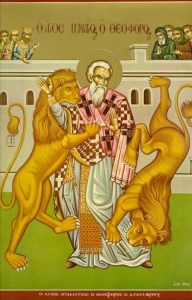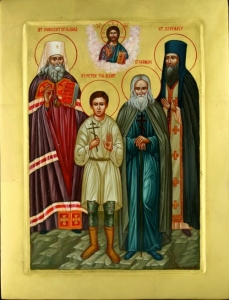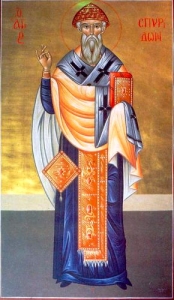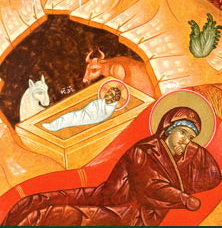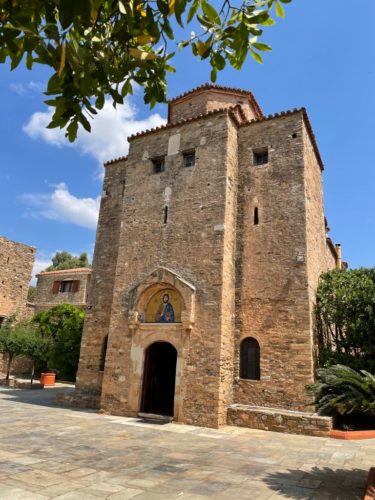
Entrance to Transfiguration Chapel at Pantokrator
Monastery
Today we visited and venerated the relics of the Holy Fathers of the Pantokrator Monastery at Ntaou Penteli. Our Transfiguration Parish in Austin TX is blessed to have relics of these martyred Fathers in our Holy Altar. This link will relate the history of the Monastery for your understanding: http://www.pantokratoros-tao.gr/index.php/en/ The convent is growing and building a new Church Temple to the Glory of God. The Commemoration of these Martyrs is the Tuesday of Bright Week

God Bless ….Fr. G.

The Saints of January
If you take a quick look at January’s ecclesiastical calendar you notice that it is dominated by big events. Christ’s Circumcision, St Basil, Epiphany and its associated feast days, St. John the Forerunner, St. Anthony, Sts. Athanasios and Cyril and the Three Hierarchs (together and separately). Goodness, it’s enough to make you tired. With this post, I would like to look at some of the other commemoration; lest they slip by us. January has a great number of saints that are not featured in bold type, but are extremely interesting in their diversity and their spiritual examples to us. From the very first day, we see the unfolding of families of holiness with Gregory of Nanzianzos (Sr.), father of Gregory the Theologian, to the last day Sts. Cyrus and John the Unmercinaries. We see examples of piety, sacrifice, people who defended the faith and ascetics. There really isn’t enough space to write concerning each saint, but needless to say the variety and diversity are a little mind boggling.
Perhaps, it is more beneficial to think a moment of the intent of the Church to commemorate saints at all. Why do we bother? What good do all these strange names and strange sounding places do us? Most of the people held up for our consideration are literally strangers. We might know someone named Gregory or Tatiana, but few of us know a Hermylos or a Kalogeras. What good do all these historical figures do us? It would seem to me that we can all acknowledge that we live in an age of celebrity. All over television, radio, newsstands and the internet we can not get away from what some “personality” wore last night, said inappropriately, or with whom they were seen. From film stars, to sports’ figures, politicians or the new name of the week; we are constantly inundated by useless prattle about someone who is looking for their fifteen minutes of fame. The sad truth is that many times, we stop and pay attention; only, so that we are “in the know”. What a sad commentary! When confronted by the Church calendar, do we think that these people, who are commemorated, have been held up as examples for hundreds or even thousands of years? How many present day celebrities will have that kind of staying power? The answers to these rhetorical questions truly challenge us to put our priorities straight. Who do we wish to understand, some temporary here today gone tomorrow plastic celebrity or a saint who has been remembered by Christians throughout the ages. Perhaps, we should put a little effort in getting to know a new saint a month. Pick one, choose a new name and look them up. You can even Google most of them. Make this a project this year. Less fluff and more substance; it might be fun and think of how edifying it will be when we know twelve new saints. Within these saints there very well might be a new friend or someone who catches our imagination with the way they brought Christ alive in their time. If you would like refer to Prologue of Ohrid for information on the saints. (http://www.westsrbdio.org/prolog/my.html.)
]]>





